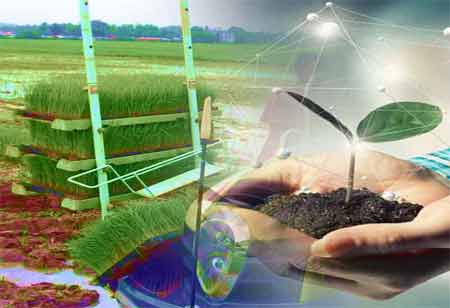Thank you for Subscribing to Agri Business Review Weekly Brief
Challenges of Vertical Farming
Emerging vertical farming practices encourage carbon footprint reduction while improving total yield production.

By
Agri Business Review | Wednesday, December 28, 2022
Stay ahead of the industry with exclusive feature stories on the top companies, expert insights and the latest news delivered straight to your inbox. Subscribe today.
Emerging vertical farming practices encourage carbon footprint reduction while improving total yield production. Streamlining farming practices reduces operational costs, energy dependency, and disease outbreak mitigation.
FREMONT, CA: Emerging farming procedures are meeting diminishing global resources by growing all types of crops, regardless of weather conditions, yearly using fewer geographical space, water, and farmhands. Vertical farming produces more yield than traditional farming processes and is more sustainable. Research shows that the vertical farming market is growing at a CAGR of 25 percent to reach USD 9.7 billion by 2026.
Emerging vertical farming practices contribute positively to the farming industry. The agricultural industry can tap into its potential by resolving its challenges.
The challenges of vertical farming are:
Energy dependency: Vertical farming requires uninterrupted power and water supply to sustain year-long crop growth. Indoor farm infrastructure involves LED lighting. Farmers find current LED models cost-ineffective due to their high consumption rates of 65 percent of a vertical farm's energy expense. Continuous power supply sustains heating, ventilation, and air conditioning (HVAC) systems. Power cuts set artificial farming systems back its production, affecting overall yield. Farmers need to install power backups, which adds to ramping costs.
Technical expertise: Farmers need extensive knowledge while operating vertical farms to maintain, monitor, and optimize crop growth. Advanced vertical farming knowledge allows farmers to reduce overall expenses and increase investment returns (ROI). Vertical farms are minimizing the need for large numbers of the human workforce.
Farmers are integrating the internet of things (IoT), artificial intelligence (AI), robotics, advanced imaging, and drones to replace human involvement as automated equipment eases the continuous management of vertical farms. Digital solutions challenge farmers to understand technical applications to configure, supervise, and sustain technologies long-term and minimize maintenance costs.
Vulnerability to water-borne diseases/pests: Vertical farms are susceptible to water diseases and outbreaks due to their interconnected waterways. Disease management is time-consuming, with high risks. Farmers isolate their crops, but such as disease management strategy is not sustainable for the long term. Farmers must increase vigilance to crop inputs, packaging, and farming practices in specific growing areas to reduce potential contamination risks.
Strategic vertical farm systems can facilitate necessary hygiene practices. Standard operating procedures (SOP) applications ensure consistent monitoring and cleaning of the farm's infrastructure, like equipment, racks, floats, trays, and pipes.





